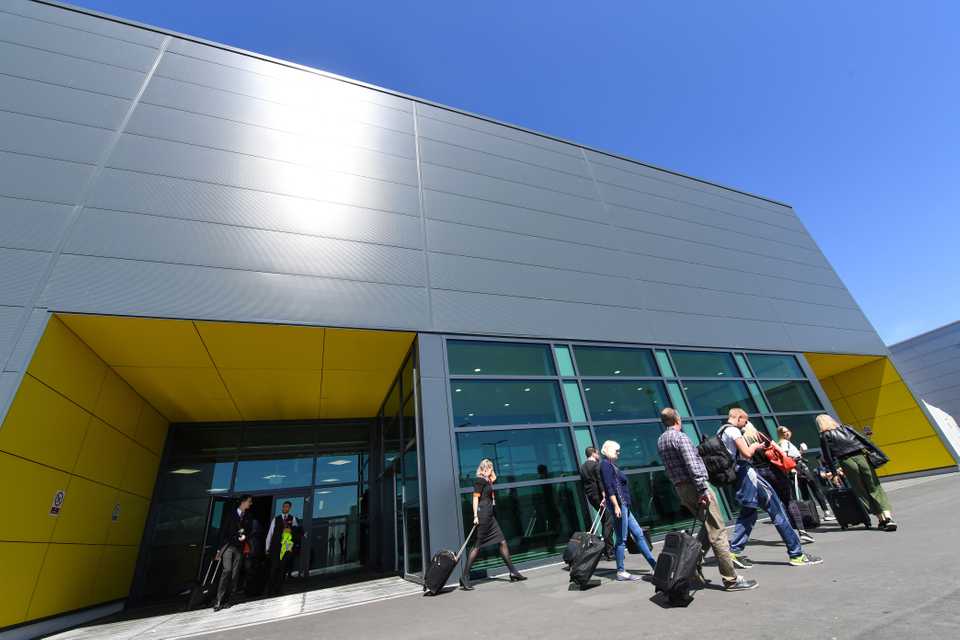Table of Contents

Context
Chapter 19 of Volume 2 of the PEIR presents a preliminary assessment of potential effects on waste infrastructure (specifically landfill capacity) and the national demand for resources.
In 2019, the airport generated a total of 2,471 tonnes of non-hazardous operational Commercial and Industrial (C&I) waste and 21 tonnes of hazardous waste. 60% of airport operational non-hazardous waste was sent to recycling facilities, with the remaining 40% sent to an energy recovery facility. No non-hazardous C&I waste was sent directly to landfill.
Mitigation measures
A range of proposed measures intended to minimise waste and resource use are embedded as part of the Proposed Development. These include:
Construction
- Draft CoCP sets out good practice measures for minimising waste during construction, using materials with recycled content and adopting sustainable procurement practices;
- construction waste would be managed in line with a Site Waste Management Plan (an Outline Site Waste Management Plan has been included within Appendix 19.1 of Volume 3 of the PEIR). Reuse of non-landfill material (i.e. soils and demolition waste) would be managed in line with a Materials Management Plan, prepared by the contractor; and
- a number of measures to minimise waste by design have been identified and designers and contractors would be required to continue to identify opportunities to design out waste. For example, demolition waste would be reused on-site, where possible, cut and fill balance would be optimised to minimise the amount of excavated material imported or exported. Landfill material would undergo treatment with hazardous material removed and other material reengineered to allow it to be reused elsewhere within the Proposed Development.
Operation
- for operation, the design of the Proposed Development would provide adequate internal and external waste storage to allow waste segregation to facilitate recycling.
Likely significant effects
Construction
The preliminary assessment estimated the amount of waste likely to be produced and resource use required during the construction of the Proposed Development.
Given the current maximum estimated construction waste quantities by phase arising from the Proposed Development (234,300m3 (Phase 2b) of inert and 56,922m3 (Phase 2b) of non-hazardous waste, and 2,400m3 (Phase 2a) of hazardous waste), the proposed measures to minimise waste and waste recovery, and the landfill capacity in the study area, no likely significant effects on the capacity of waste infrastructure, specifically landfill capacity, were identified.
The quantity of materials required for the construction of the Proposed Development represent less than 1% of the overall national demand for construction materials, when considered over the construction programme, and therefore no likely significant effects were identified.
Operation
The preliminary assessment concluded that during operation non-hazardous waste generation is predicted to increase to 4,393 tonnes by 2043 (which is 20,919m3) due to the increase in passenger numbers through the airport, but the current rate of waste diverted from landfill (100%) is expected to be maintained. As such, the operation of the Proposed Development is not likely to have a significant effect on the existing waste management infrastructure, specifically landfill capacity.
Quantities and types of material resources required for the operation of the Proposed Development are currently unknown, however within the context of national demand, these are not likely to be significant.
Completing the assessment
Further assessment of baseline waste management infrastructure capacity and estimates of waste and resource use associated with the Proposed Development will be undertaken. In addition, further mitigation measures will be considered and presented, as appropriate. These will also be presented within the Outline Site Waste Management Plan for construction to be submitted with the application for development consent.
Documents
PEIR Chapter 19 : Click Here
Figures
19.1 Non Hazardous Waste Expansive Study Area : Click Here
19.2 Hazardous Waste Expansive Study Area : Click Here
Appendices
19.1 Outline Site Waste Management Plan : Click Here